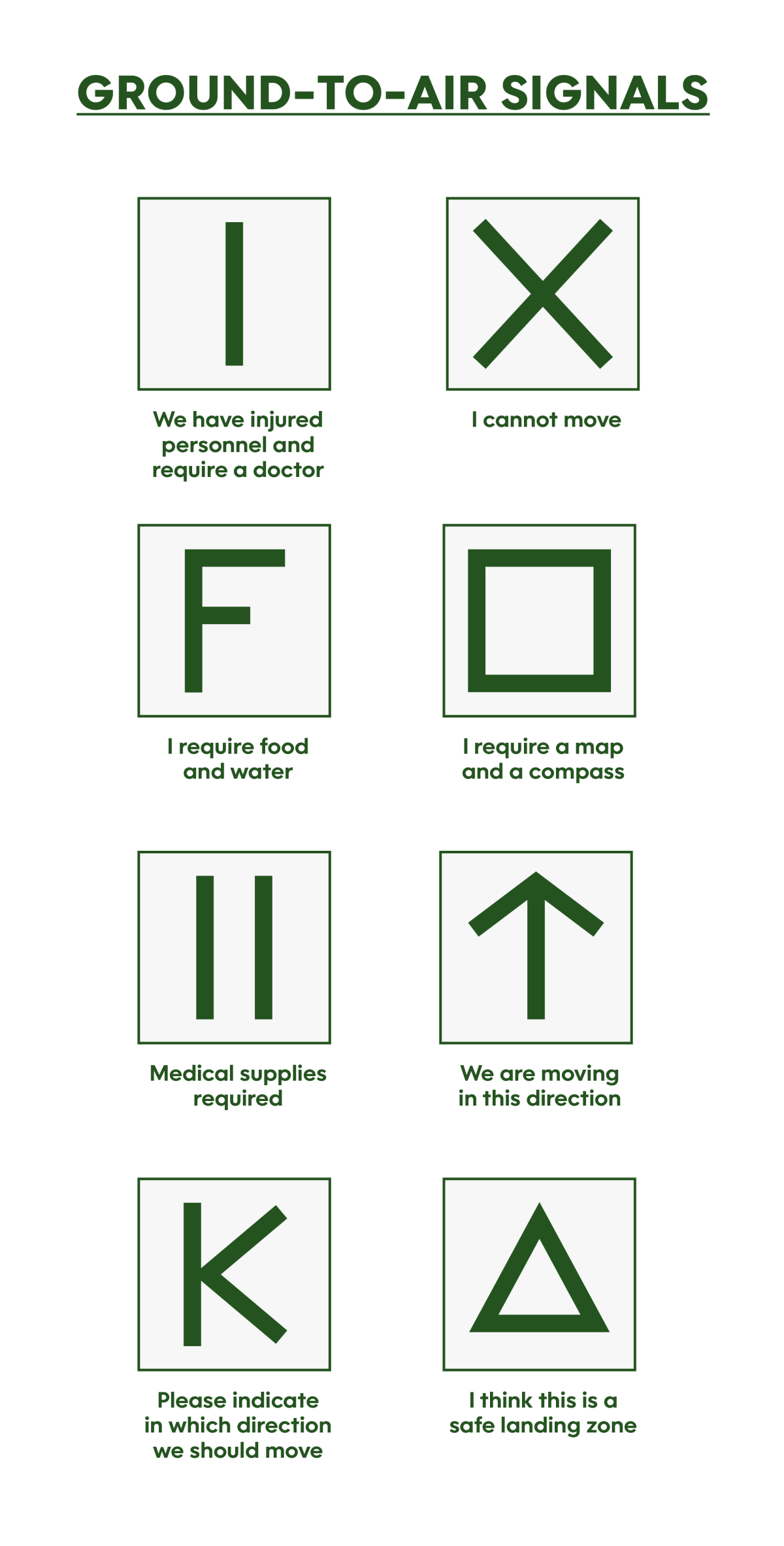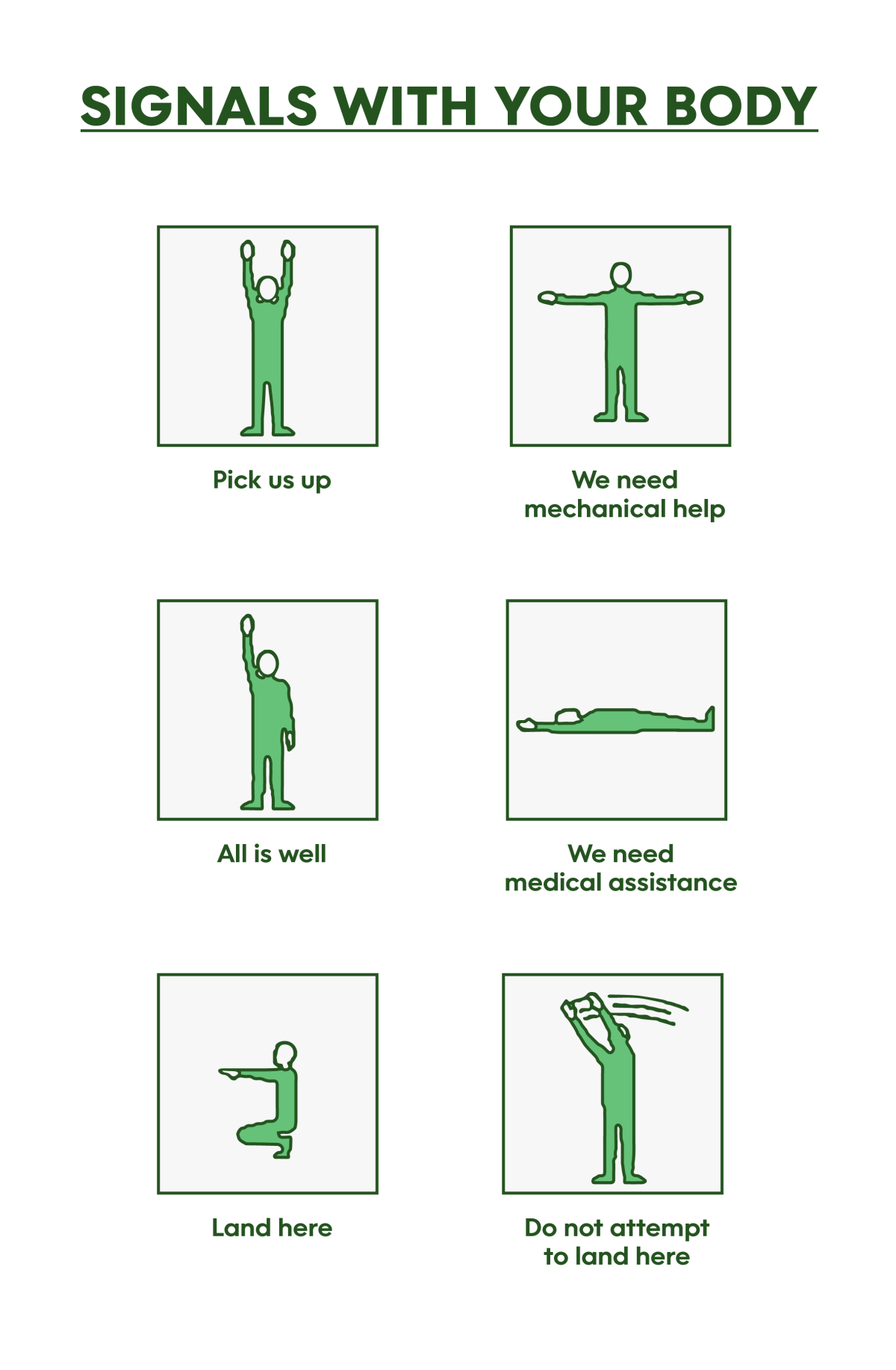How to Signal to Rescue Aircraft and Helicopters like Bear Grylls
Bear Grylls has used helicopters and planes to get in and out of some of the remote places, whether it is for training, expeditions, or filming his TV shows, and he is trained in the signals for communicating a message to these air crews while they’re up in the air and he’s on the ground.
If you’ve been watching the new series of Running Wild, you may have noticed Bear signaling to the helicopter with his arms in the remote canyons of Wyoming. He uses signals to tell the helicopter crew to pick him and Bradley Cooper up, just after they have let off a flare to indicate their position.
Signaling to Air Crews
Air crews around the world are all trained in standard emergency signals, so if you make one of these signals, they will recognize the message.
These are divided into two methods. The first is ground-to-air signals, which are marked out on the ground with whatever you have available, including rocks, logs, clothes, or grooves in the earth. The second method is signals made with your body.
The most useful ground-to-air signals include:

You can also make distress symbols with your body. Here are some useful ones:

Aircraft Signals
If the crew or pilot of a fixed-wing aircraft has seen your signal, they may make the following responses:
• If the plane wings rock from side to side during the day or the plane emits green flashes at night, it means “message received and understood.”
• If the plane flies in a clockwise circle during the day or emits red flashes at night, it means “message received but not understood.”
Helicopter Signals
“If there’s a helicopter coming to rescue you, you’ll increase your chances of getting out alive if you know how to marshal it safely to the ground,” says Bear in How To Stay Alive.
First, you need to make sure the helicopter has a safe landing zone by selecting a wide-open flat space and making sure any obstacles are moved out of the way.
Make sure the ground is as level as possible and that there is enough space for the helicopter to get to the ground without any risk of clipping or hitting its tail rotors.
Here are some of the basic helicopter marshaling signals. When making these signals, stand with your arms aloft and with your back to the wind:

As the chopper comes in to land, make sure that all hats or loose garments are off and secured. Keep low and only approach the chopper from the front.
“Imagine that the nose of the aircraft is at 12 o’clock—you need to approach between 10 o’clock and two o’clock,” says Bear. “Above all, stay away from the tail rotor blade and be aware of the height of the spinning main rotor blades if approaching from undulating ground.”
Source: https://outdoors.com/how-to-signal-rescue-aircraft-helicopters/






